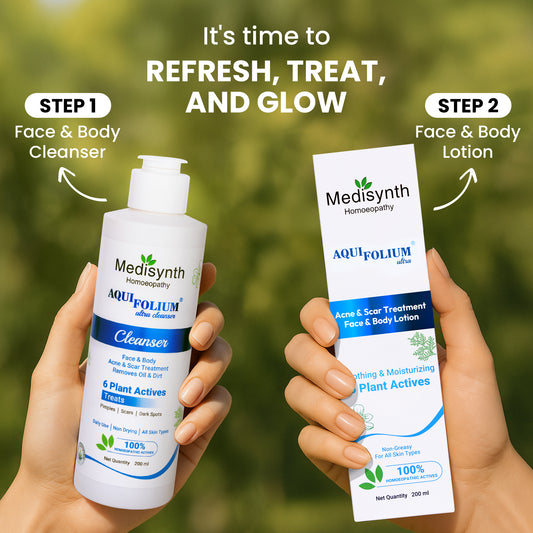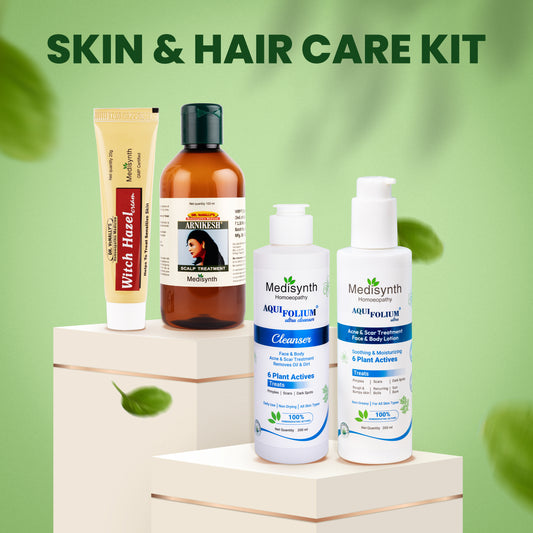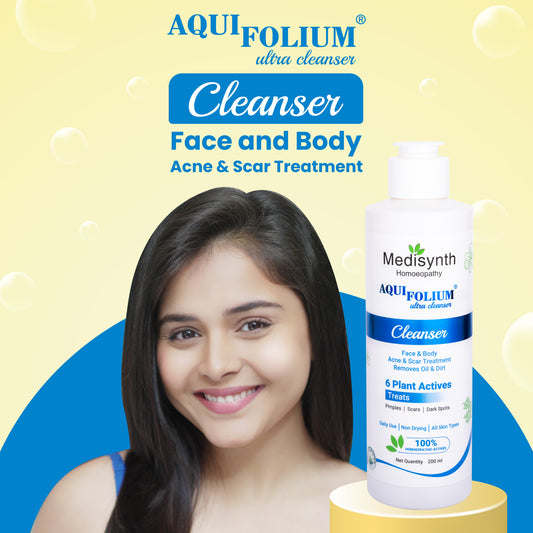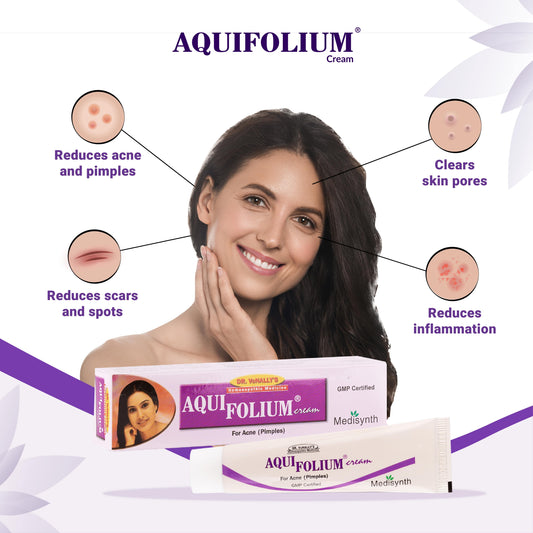Cleanser vs. Face Wash: Understanding the Key Differences

In the world of skincare, some of the most basic questions often feel the most confusing. One such dilemma many people face is choosing between a cleanser and a face wash.
While these terms are sometimes used interchangeably, they are not the same. Understanding the difference between cleanser and face wash can drastically improve your skincare routine and help you make more informed decisions about what your skin really needs.
Let’s dive into a detailed breakdown of what these products do, when to use them, how they differ, and how to choose the right one for your skin type.
What is a Cleanser?
A cleanser is a gentle skincare product designed to clean the face without disturbing the skin's natural oils and pH balance.
It removes dirt, makeup, excess sebum, and environmental pollutants from the surface of the skin.
Unlike harsh soaps, cleansers are formulated to be mild and non-irritating, making them ideal for everyday use, especially for those with sensitive or dry skin.
Cleansers come in several forms, each offering unique benefits. You might find them as cream cleansers, gel cleansers, oil-based cleansers, cleansing balms, or micellar waters. These variations are designed to work with different skin types and needs.
For instance, a cream-based cleanser is typically best suited for dry or mature skin. It hydrates while cleansing, leaving the skin soft and nourished. Oil-based cleansers are highly effective at dissolving waterproof makeup and sunscreen, making them a popular first step in the double cleansing method.
Micellar water is another gentle option, ideal for quick makeup removal or light cleansing when water isn’t readily available.
The use of cleanser is especially recommended for individuals who wear makeup daily, are exposed to pollution, or want a mild option for morning or nighttime cleansing.
It doesn’t create foam like a traditional face wash, which is often more aggressive. Instead, a cleanser works by binding with impurities and gently lifting them away from the skin’s surface.
What is a Face Wash?
A face wash, by contrast, is a more robust product designed for a deeper clean. It is usually water-based and creates foam when mixed with water.
Face washes contain surfactants, which are ingredients that lift dirt and oil from the skin. This makes them effective at removing sweat, grime, and pore-clogging debris.
Face washes are particularly popular among people with oily or acne-prone skin because they penetrate deeper into the pores.
They’re great for cleansing after a workout, during hot weather, or in the mornings when your face might feel greasy or unclean.
However, some face washes can be a bit too drying for people with sensitive or dry skin, especially if they contain strong exfoliating agents or high levels of harsh chemicals
Foaming face washes are the most common type. These are ideal for people who like that "squeaky clean" feeling.
Then there are gel-based face washes, often recommended for combination or oily skin types.
Some face washes also contain active ingredients such as salicylic acid to combat acne, charcoal to absorb oil, or glycolic acid to exfoliate the skin.
While effective, it is important to remember that using a face wash too often or using the wrong kind for your skin can strip the skin of its natural oils. This can lead to dryness, sensitivity, or even increased oil production as your skin tries to compensate.
Key Differences Between Cleanser and Face Wash
Though both products aim to clean the skin, cleansers and face washes work differently, target different skin needs, and have unique long-term effects.
Here's a clear breakdown of what truly sets them apart.
1. Method of Cleansing
-
Cleanser: Uses mild surfactants, emulsifiers, or micelles to gently lift away dirt, oil, makeup, and sunscreen from the skin’s surface. It cleans without disrupting your skin’s moisture balance.
-
Face Wash: Uses stronger, foaming surfactants that penetrate deeper into pores to remove sweat, oil, and impurities. It's designed for a more intensive cleanse.
2. Effect on the Skin Barrier
-
Cleanser: Maintains the skin’s natural pH (around 5.5) and supports the acid mantle. Ideal for protecting sensitive or dry skin.
-
Face Wash: Can be slightly alkaline and more stripping, especially if used excessively. Some formulations may weaken the skin barrier over time if not pH-balanced.
3. Texture and Formulation
-
Cleanser: Comes in creamy, gel, oil-based, or balm forms. Typically non-foaming. Many are enriched with hydrating ingredients like glycerin, ceramides, and plant oils.
-
Face Wash: Usually water-based and available as foaming gels or liquids. Often includes active ingredients like salicylic acid, charcoal, or exfoliants.
4. Ideal Use Cases
-
Cleanser is best for:
-
Removing makeup or sunscreen
-
Dry, sensitive, or mature skin
-
Morning routines or dry climates
-
First step in a double cleansing routine
-
Face Wash is best for:
-
Oily or acne-prone skin
-
Post-exercise or hot, humid conditions
-
Deep pore cleansing
-
Managing sebum and preventing breakouts
5. Skin Type Compatibility
-
Cleanser: Ideal for dry, dehydrated, sensitive, or acne-prone skin. It helps maintain hydration and calms irritation.
-
Face Wash: Suitable for oily, combination, or acne-prone skin. It clears clogged pores and reduces excess oil effectively.
6. Long-Term Skin Impact
-
Cleanser: Supports long-term skin health by preserving natural oils and preventing moisture loss. Helps reduce redness and irritation over time.
-
Face Wash: Offers deep cleansing benefits but may cause dryness or sensitivity if not chosen carefully. Overuse may trigger rebound oiliness or breakouts.
When Should You Use a Cleanser vs. Face Wash?
Your skin’s needs may change depending on your environment, lifestyle, and even the seasons. Here’s how to know when to use each:
Use a cleanser when:
-
Your skin feels dry, tight, or irritated.
-
You are wearing makeup or sunscreen that needs to be dissolved gently.
-
You want to cleanse your skin without using water, such as with micellar water.
-
You are double cleansing and this is your first step.
-
It is winter or the air is especially dry and you need to retain skin moisture.
Use a face wash when:
-
Your skin feels oily or greasy.
-
You have been sweating or exposed to dirt and pollution.
-
You need a deep cleanse to refresh your skin.
-
You are dealing with acne or clogged pores.
-
It is hot or humid outside and your skin is producing more sebum.
For many people, both products have a place in their routine. Some prefer to use a cleanser in the morning to maintain moisture and a face wash at night for a deeper clean, or vice versa, depending on skin type.
Double Cleansing: Why Some People Use Both
If you have heard of the term double cleansing, it refers to using a cleanser and face wash back-to-back. This is especially popular in Korean and Japanese skincare routines and is now widely adopted around the world.
In this method, the first step involves using an oil-based cleanser or micellar water to remove makeup, sunscreen, and surface oil. This helps break down stubborn products that water alone will not rinse off. The second step is to follow up with a face wash that cleans deeper into the pores, washing away any leftover residue and ensuring your skin is completely clean.
Double cleansing is ideal at the end of the day for people who wear makeup or live in cities where pollution levels are high. It ensures your skin is fully prepped for the rest of your routine, whether that includes serums, moisturizers, or treatments.
How to Choose the Right Product for Your Skin
When choosing between a cleanser and face wash, your skin type should be your biggest consideration.
If you have dry skin, you will benefit more from hydrating cleansers with ingredients like ceramides, hyaluronic acid, or glycerin. Creamy or oil-based formulas will nourish your skin while cleaning it.
If you have oily or acne-prone skin, a foaming or gel-based face wash containing salicylic acid, tea tree oil, or benzoyl peroxide may be better suited. These ingredients help to control oil and prevent breakouts.
For sensitive skin, fragrance-free and sulfate-free cleansers are usually safest. Look for calming ingredients like chamomile, aloe vera, or oat extract.
Combination skin may benefit from using a gentle cleanser in the morning and a more thorough face wash at night, or alternating between the two depending on how your skin feels.
Normal skin types have the flexibility to experiment and see which product gives them the best result without causing dryness or breakouts.
Conclusion
When it comes to cleanser vs face wash, there is no universal right or wrong answer. The difference between cleanser and face wash is primarily about formulation, function, and skin type suitability. Cleansers offer a gentle, nourishing cleanse that respects your skin’s natural moisture, while face washes provide a deeper, sometimes more aggressive clean that targets oil and pore congestion.
Instead of choosing one over the other, consider using both strategically. Incorporating the use of cleanser for gentle daily care and the power of a face wash when your skin needs a more intensive cleanse can lead to healthier, clearer skin in the long run.
Remember, skincare is personal. Always listen to what your skin is telling you and adjust your routine as needed. Whether you are a minimalist or a skincare enthusiast, understanding these basics will help you make smarter choices and build a routine that truly works for you.
References:
- Boericke’s Materia Medica









